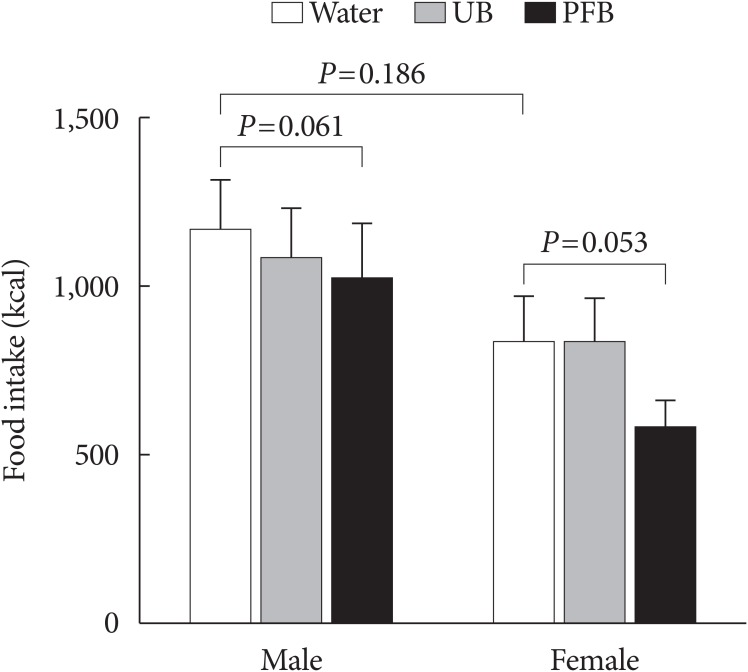Response: Premeal Consumption of a Protein-Enriched, Dietary Fiber-Fortified Bar Decreases Total Energy Intake in Healthy Individuals (Diabetes Metab J 2019;43:879–92)
Article information
We thank Professor Mi-kyung Kim for her careful comments on our article [1]. We agree that premeal supplement can have sex-specific effects or, at least, differ in the degree of effects according to sex. Previous studies suggested that nutrient preload can have differential effects between male and female, which is attributed to the differences in a compensatory response, gastric emptying, and gut hormones [23]. We reviewed our study results and compared the effects of protein-enriched, dietary fiber-fortified bar (PFB) between male and female subjects. There were 14 male and six female subjects in our study. To compare the effects of PFB, we calculated the changes in various measurements after premeal PFB intake compared to water intake in each subject. Then, we compared these changes between male and female subjects. The effects of PFB on food intake, appetite, and fullness were similar between male and female. PFB decreased total energy intake numerically more in female than male (Δfood intake: −241.9± 235.1 kcal vs. −140.0±253.8 kcal, P=0.412) (Fig. 1), but the difference was not statistically significant. PFB also decreased postprandial glucose and increased postprandial glucagon-like peptide-1 levels similarly in both sexes. The effects of PFB on postprandial peptide YY (PYY) and active ghrelin showed a different trend between male and female, but this trend was not statistically significant. PFB increased postprandial PYY in male, while it was decreased in female (Δincremental area under the curve (iAUC) of PYY: 503.4±2,082.4 pg/mL×min vs. −257.5±2,359.5 pg/mL×min, P=0.480). Postprandial active ghrelin was decreased by PFB in male but increased in female (ΔiAUC of active ghrelin: −652.1±1,353.9 pg/mL×min vs. 854.3± 2,135.6 pg/mL×min, P=0.071). However, the responses of PYY and active ghrelin to premeal PFB were highly variable among subjects and the results had high standard deviations. Our study was not powered to compare the difference between male and female subjects and had unbalanced number of subjects in each sex. Although our study results showed similar effects of PFB on food intake and postprandial glucose in both sexes, further study with enough statistical power is needed to study the sex-specific effects of premeal PFB intake.

Total energy intake for 120 minutes in male and female subjects. UB, usual bar; PFB, protein-enriched, dietary fiber-fortified bar.
Notes
CONFLICTS OF INTEREST: No potential conflict of interest relevant to this article was reported.
